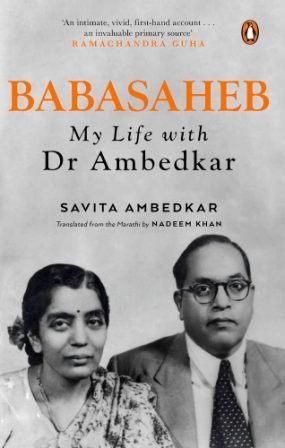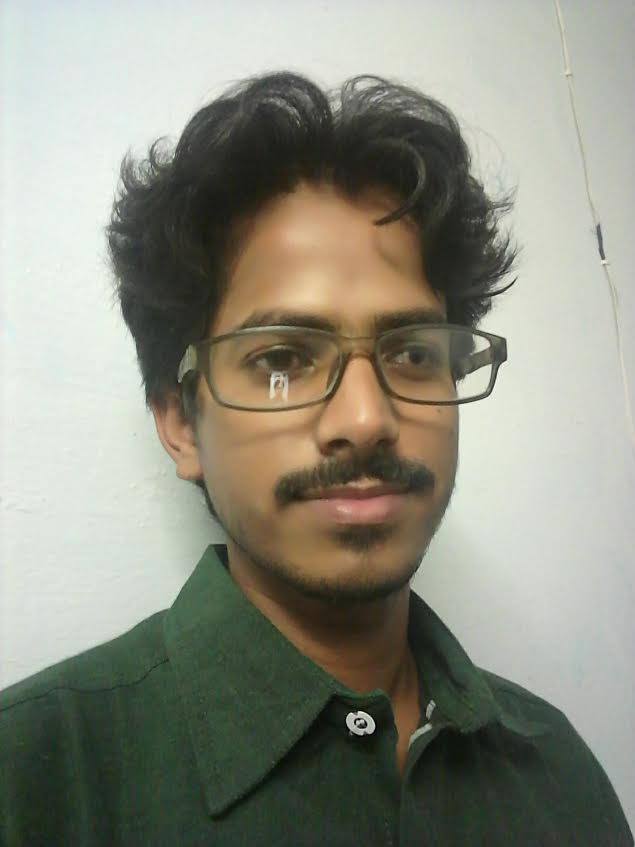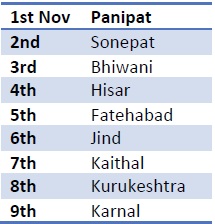Book Review: “Babasaheb My Life with Dr. Ambedkar” by Dr. Savita Ambedkar translated from the Marathi by Nadeem Khan
Rajesh Chandra Kumar & Vinay Damodar
Dr. Savita Ambedkar, formerly known as Dr. Sharada Kabir, was born into a middle-class Saraswat Brahmin family and met Dr. Bhimrao Ambedkar while he was a patient suffering from a number of serious diseases. She is popularly known as Maisaheb by the followers of Dr. Ambedkar. She helped Dr. Ambedkar draft the Indian constitution, construct the Hindu Code Bill, write some of the most acclaimed works, including The Buddha and His Dhamma, and convert millions of Dalits to Buddhism from the day of their wedding until the day of his death on December 6, 1956. Several of Dr. Ambedkar’s disciples, fearing for their political futures, shackled her into obscurity after his death. In 1970, she re-emerged into public view and resumed her husband’s life’s work: advocating for the Dalit community’s betterment. Dr. Ambedkarnachya Sahawasaat, her autobiography, was first published in 1990 in the Marathi language. Though the book of Maisaheb was published in the year 1990, it took 32 years, i.e., in the year 2022, to translate it from Marathi to English. Most of us did not know about the life of Savita Ambedkar, nor were we aware of her contribution to the life of Babasaheb. The controversy that was spreading all over the Dalit community was that she poisoned Babasaheb, but the people from the Dalit community did not know that it was her because of whom Babasaheb lived another six years. Here, the question arises as to why the book took 32 years to come out in English. Why was nobody interested in writing a translation of this? This is the same question being asked by the translator, Nadeem Khan. Even nowadays, people from the Dalit community don’t know much about Maisaheb, nor do they want to talk about her. They only want to see Ramabai as their ideal regarding Babasaheb’s life. We see Maisaheb’s writings within the book as a part of Babasaheb’s life and not in disrespect toward Ramabai. Ramabai was there with Babasaheb in the earlier phase, whereas Maisaheb was there with Babasaheb in the later phase. Both have contributed their part in the life of Babasaheb. By saying this, we request all the people to go through this book to understand the life of Babasaheb in a better way directly from Maisaheb’s witness while being a life partner. In order to shape her experiences with Babasaheb, she was assisted by Devchand Ambade (Tathagat Prakashan) and Vijay Surwade (who assisted her in collecting the original letters and other materials of Babashab) to develop into a book.
Since Babasaheb is the one who selected Maisaheb as his life companion, any action taken against her would be taken as an attack on both of them. The Dalit leaders went so far as to say that the whole medical community should be insulted as Savita Ambedkar was not a doctor and just a nurse. She chose not to pursue the lawsuit because she did not want to drag the excellent person’s life through the courts and because she feels an obligation to protect the great man’s honourable character.
The biography starts with a dedication to Babasaheb as a great person and how Savita Ambedkar became a part of this great person’s life. Then it further goes towards telling the audience about her family background and her life before coming to Babasaheb’s life, Education of her, Medical Admission, Doctor, practice with Dr. Malvankar, her job in Gujarat. She had six siblings and out of them four had inter-caste marriage which she felt proud of. This shows how their family was progressive in terms of inter-caste marriage (p.14). Further she added how she was a talented girl with great enthusiasm towards her study. Maisaheb was the chief medical officer and head of the physiotherapy department (General Ward). This could be a reply to those Dalit leaders who accused her profession as not a doctor but a nurse. We assume this part of her to include within the book as a reflection to those people who questioned her talent in becoming a doctor or nurse.
One of the crucial parts of this book is, it reflects upon the private conversation of Babasaheb with Savita Ambedkar. We do not know why it was important for her to share the private conversation of Babasaheb but one thing we observed from the book is she was trying to let people know how Babasaheb was caring Savita Ambedkar and how their love relationship was. The readers will be able to know less known facts about Ambedkar in his day to day life. One of their private conversations is related to sexuality. Upon knowing that Savita Ambedkar is not interested in sexual desire, Babasaheb shares that his old age and illness will be an advantage for her in that regard (p.76). He further consoles her by saying that though the sexual desire will be there, but he will not force her to have intimacy. He will control himself. This shows how Babasaheb was a person of respecting women even in his personal life.
Most people are curious to know when the first meeting happened between Babasaheb and Savita Ambedkar and how this first meeting proceeded further to engage more towards both as companions. To which she explained within the book that Babasaheb had a close friendship with Dr. Rao, and he was frequently visiting the house of Dr. Rao (p.16). But Savita Ambedkar was not aware about Babasaheb’s friendship with Dr. Rao. She used to visit Rao’s house because she had a friendship with the daughter of Dr. Rao. One day when Babasaheb was having a close discussion with Dr. Rao, Savita Ambedkar joined their discussion. She mentioned that she liked Babasaheb’s presentation of arguments in front of Dr. Rao. This was the first meeting she narrates and the second time they met at the clinic of Dr. Malvankar (who is a physiotherapist).
From the book we came to know how Babasaheb was disciplined in his personal life. Upon knowing that Babasaheb’s wife is no more, Maisaheb made a proposal to Babasaheb that she can come to the bungalow to give medicine to Babasaheb. In this regard, Babasaheb refused and said that it is impossible. The reason he gave is that he has a lot of followers, and they respect him. If the people come to know that Babasaheb has kept a young lady in his bungalow then both his followers and the enemies will start questioning the character of Babasaheb. According to Savita, Babasaheb said that he will directly make her a legal wife rather than as a nurse so that people will not have anything to say.
People might have not known that it was Babasaheb who put the proposal of marriage in front of Savita Ambedkar. From the book we got to know that many associates of Ambedkar were requesting Ambedkar to get married for a second time, but Babasaheb has been refusing this. But when he saw Savita Ambedkar, he thought that he could put a proposal to Savita Ambedkar. From the letter of Ambedkar, it is understood that Babasaheb had three reasons to marry Savita Ambedkar. That is 1) one is a medical practitioner, 2) well educated, and last one 3) good at cooking. He further said in that letter that these three qualities will not be found within the Dalit community women. He might have referred to this by looking at the context of that time. Hardly any Dalit women during that time was practising MBBS.
Babasaheb had a clear understanding towards Buddhism. In the book, it was mentioned that Babasaheb set out some rules to observe after being given the Deeksha for the people who converted from Hinduism to Buddhism. “Once you have embraced Buddhism, you will not be allowed to bring Hindu ideas and Hindu gods and goddesses into Buddhism. Khandoba inside and the Buddha outside will not be allowed” (pp.152-153). There are some people who are not following this rule of Babasaheb. And hence, there is a need to make people aware about these rules.
The book also reveals many interesting tidbits about Dr. Babasaheb Ambedkar, such as his skill in the kitchen, his love of music, his devotion to his dogs, his interest in art, and more. Dr. Babasaheb Ambedkar’s loving and passionate side is seen in his letters to Savita Ambedkar. He spent 18 hours a day studying and never touched alcohol in his life. He spends so much time studying that he goes through a pair of eyeglasses every two to three weeks. All of these things point to Dr. Babasaheb Ambedkar being a magnificent human being endowed with unique talents.
Although much has already been written and shared about Babasaheb, this book will shed new light on the man through the lens of Savita Ambedkar. Since not many people know about Savita Ambedkar’s life with Babasaheb, this book will help readers to keep up with the latest developments in Babasaheb’s life. In addition, it highlights the deep affection shared by Babasaheb and Savita Ambedkar. We feel it would be unfair to Ramabai to draw parallels between the two. Babasaheb takes centre stage in this novel. Savita Ambedkar has been fleshed out a little bit more. Much of the text repeats information about Babasaheb that is already available in the public. One of the crucial parts of the book deals with the private conversations between Babasaheb and Savita Ambedkar. The fact that Savita Ambedkar’s allegiance was known during that period of Babasaheb’s activity makes it even more intriguing.
~~~
Rajesh Chandra Kumar is a Senior Research Fellow (Ph.D) in the department of Sociology at Jamia Millia Islamia, New Delhi. His research interest varies in the field of Caste, Politics, Religion, with a special focus on Odisha.
Vinay Damodar is an Ambedkarite research scholar currently pursuing PhD in Inclusive Development and Social Justice, from Centre for Study of Social Exclusion and Inclusive Policies, Tata Institute of Social Sciences, Mumbai. His interests lie in the intersections of Caste, Anti-caste movement, the Politics of Ambedkarite groups, Dr. Ambedkar’s thoughts and vision, etc. He hails from Bhim Nagar, Akola, Maharashtra.










